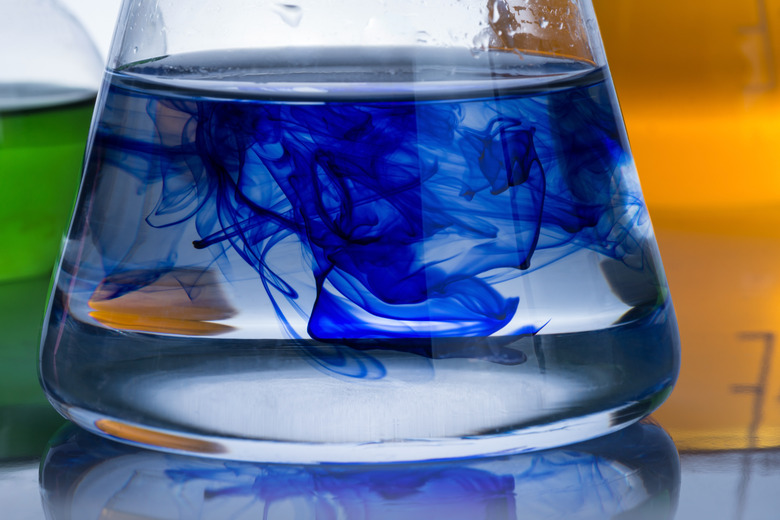How To Calculate HPLC Resolutions
Chemists use high-performance liquid chromatography, or HPLC, to separate mixtures of compounds. In general, the method consists of injecting a sample into a column where it mixes with one or more solvents. Different compounds adsorb, or "stick," to the column to different degrees; and as the solvent pushes the compounds through the column, one of the components of the mixture will exit the column first. The instrument detects the compounds as they exit the column and produces a chromatogram that consists of a plot with retention time on the x-axis and signal intensity from the detector on the y-axis. As the compounds exit the column, they produce "peaks" in the chromatogram. In general, the farther apart and the narrower the peaks in the chromatogram, the higher the resolution. Scientists consider a resolution of 1.0 or higher to represent an adequate separation.
Step 1
Measure the widths of two adjacent peaks in the chromatogram by noting where the x-axis values are at the base of each peak. The x-axis represents retention time, usually measured in seconds. Thus, if a peak begins at 15.1 seconds and ends at 18.5 seconds, its width is (18.5 – 15.1) = 3.4 seconds.
Step 2
Determine the retention times by noting the time, i.e., the location on the x-axis, that corresponds to the locations of the maxima of the peaks. This value will normally be about halfway between the two values used to calculate the width in step 1. The example given in step 1, for instance, would exhibit a maximum at about 16.8 seconds.
Step 3
Calculate the resolution, R, between two peaks by:
\(R=\frac{RT_1-RT_2}{0.5(W_1+W_2)}\)
where RT1 and RT2 represent the retention times of peaks 1 and 2, and W1 and W2 represent the widths of the peaks taken at their bases. Continuing the example from steps 2 and 3, one peak exhibits a retention time of 16.8 seconds and a width of 3.4 seconds. If the second peak exhibited a retention time of 21.4 seconds with a width of 3.6 seconds, then the resolution would be:
\(R=\frac{21.4-16.8}{0.5(3.4+3.6)}=1.3\)
Things Needed
- HPLC chromatogram
- Calculator
Cite This Article
MLA
Brubaker, Jack. "How To Calculate HPLC Resolutions" sciencing.com, https://www.sciencing.com/calculate-hplc-resolutions-7547102/. 7 December 2020.
APA
Brubaker, Jack. (2020, December 7). How To Calculate HPLC Resolutions. sciencing.com. Retrieved from https://www.sciencing.com/calculate-hplc-resolutions-7547102/
Chicago
Brubaker, Jack. How To Calculate HPLC Resolutions last modified August 30, 2022. https://www.sciencing.com/calculate-hplc-resolutions-7547102/
